Asking for great reviews from your customers is crazy hard. And replying to bad reviews can be even harder. But if you understand your reviewers, you can earn more 5-star reviews overall.
Thanks to a new report provided by Trustpilot, we can understand:
- Why people leave good reviews
- Why people leave bad reviews
- What people expect after leaving a review
- What people hope for in a review response
Pinpoint the reason why people leave a review – good or bad – will make it easier and more compelling to ask for one. Remember, bad reviews are as important as the good ones. So getting them sent in to you is step one.
Step two is how you react to them. Understand what expectations people have after leaving a review. You can then follow up with them and turn even the worst review into a 5 star experience.
Understand Why People Leave Good Reviews
The #1 reason people leave reviews is to help others make good buying decisions.
Think about the last time you left a review. Maybe you wanted to help others get to this great solution faster than you did. Maybe you tried lots of crappy products before you found the solution you were looking for. At the end of the day, we like the idea of making other people’s lives a bit easier.
Now think of how you can use that to your advantage.
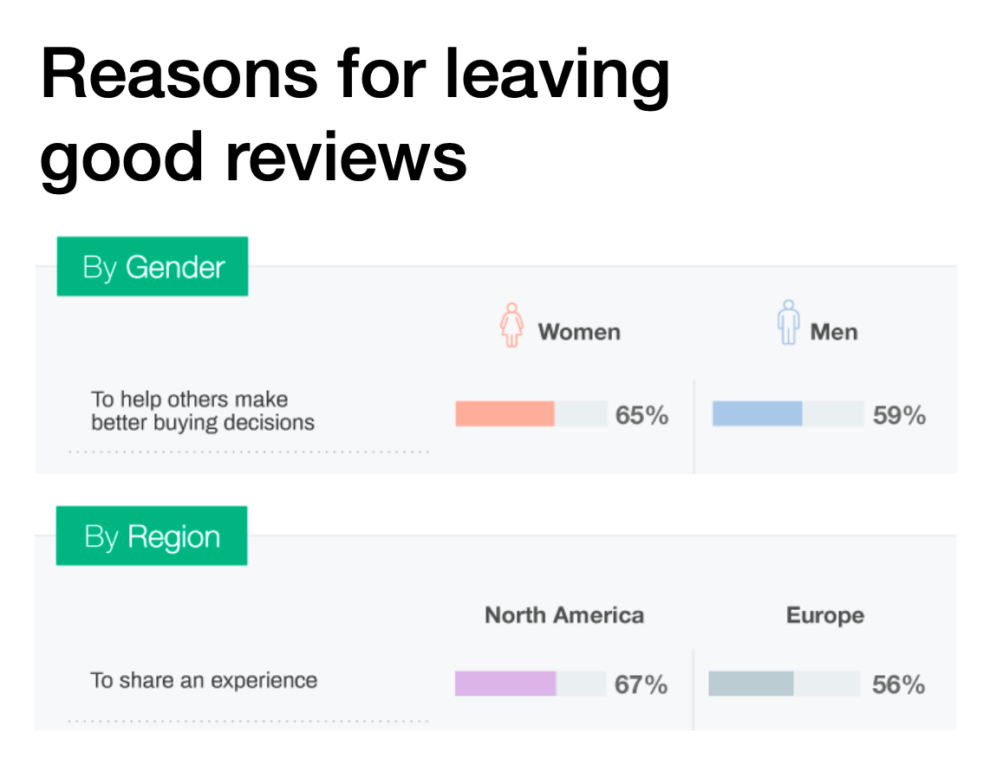
When requesting a review, remember that sharing advice with others is probably your customer’s top emotional drive. In your emails or outreach, include language like one of these examples:
“Help educate others on how awesome our sofa beds are by writing an informative review!”
“Love our eBook? Write a review and share with others what the top benefit is you got from our content!”
Prompt your customers to write the review – not for you – but for other consumers.
On the flip side, Trustpilot’s study also found that about 20% of people leave a review simply because they were asked.
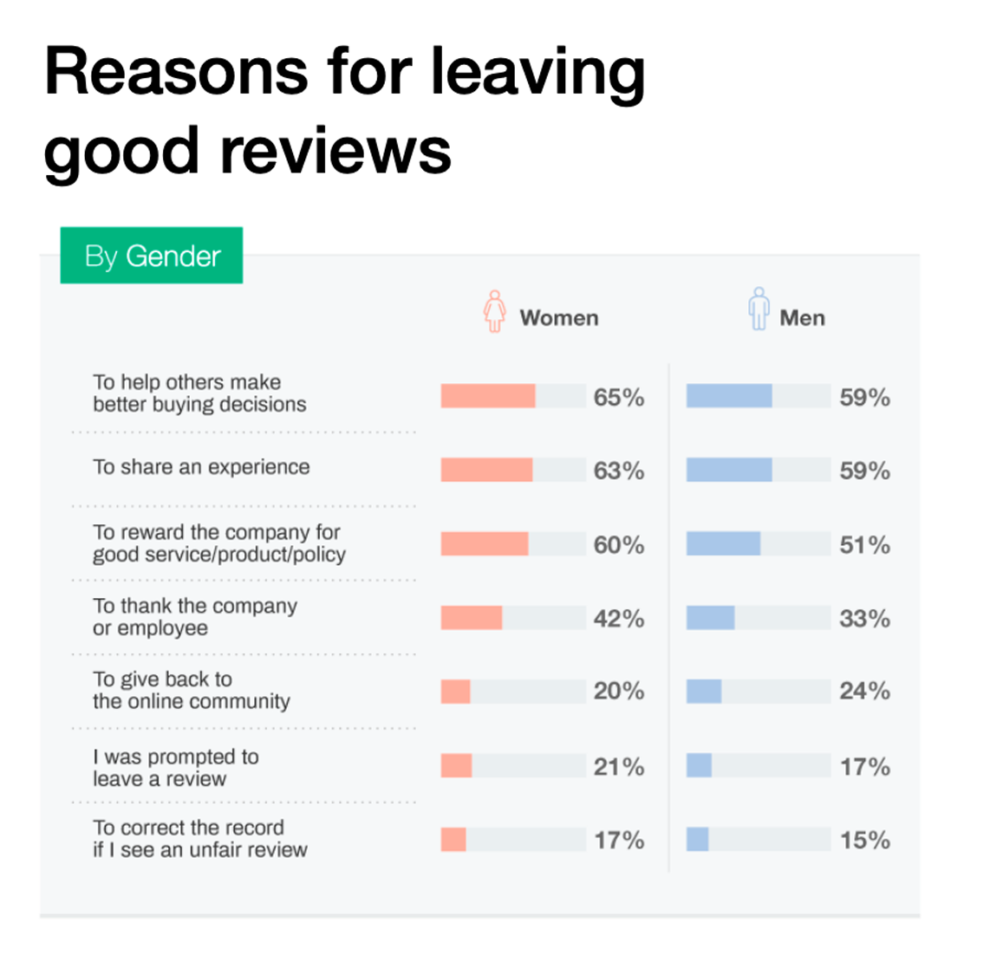
In light of this, it may seem like asking for a review is a waste of time – it isn’t! Add incentives into your ask, like helping others. As a result, your request is more likely to attract online reviews.
What Do People Expect After a Review?
You definitely want as many good reviews as possible. But you’re bound to receive a few negative ones and that’s okay. There is a lot we can learn from Trustpilot’s study about how best to reply to a negative review. A good response can even turn around the customer’s thoughts about you.
The number one reason people leave bad reviews is to warn the online community. People want to educate, inform, and help other buyers.
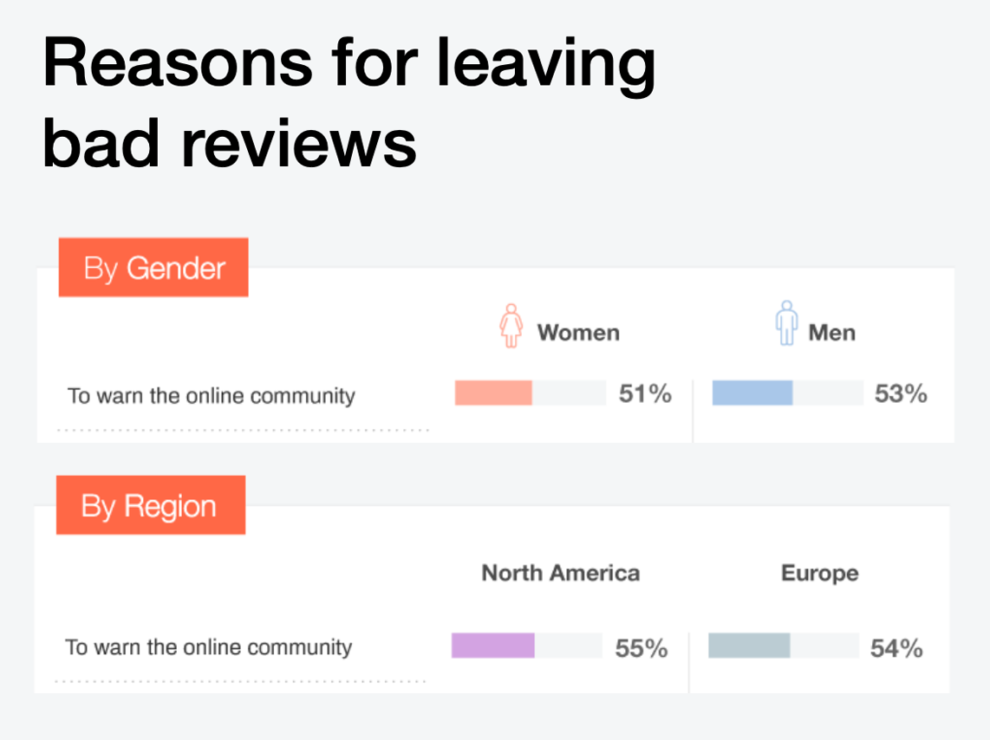
People who leave a bad review don’t expect a response from the brand at all. After all, their review was for other buyers, not the company.
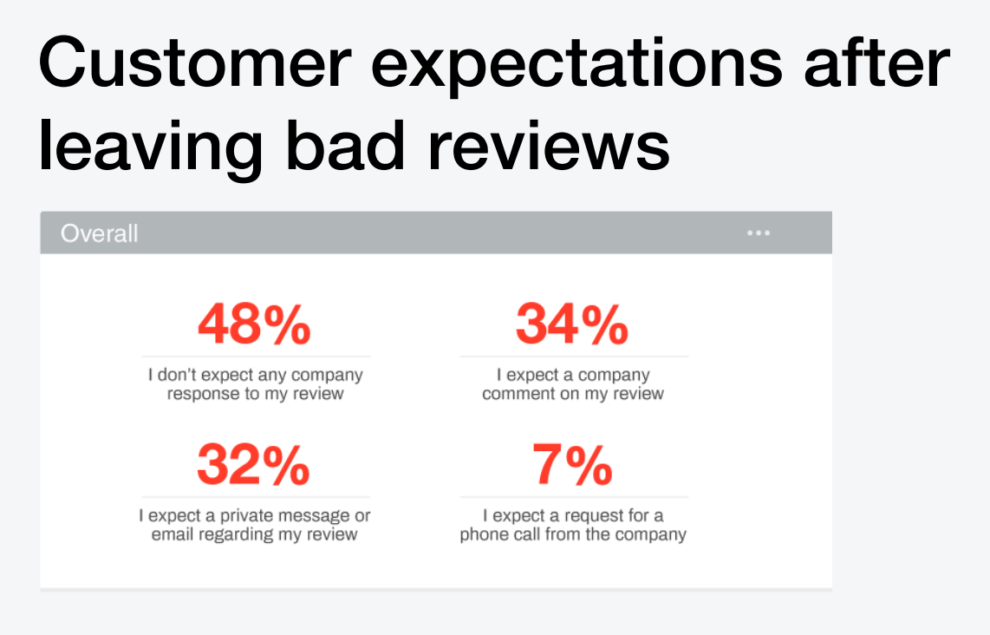
What those negative review writers do want is for you to solve the problem and reach out to them about it.
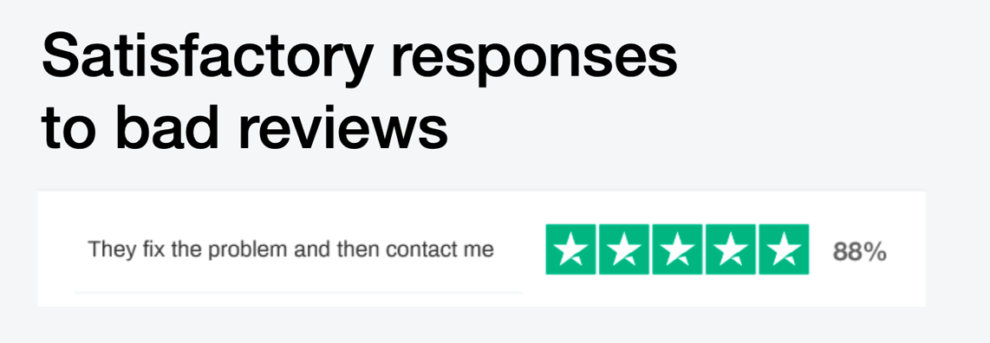
What can you learn from this?
- Replying to a bad review is not expected, so doing it any will exceed your customer’s expectations.
- Addressing their main concerns (fixing the problem and reaching out) should be present in your response.
Express compassion for any negative experience and follow up in the way your customers most want. It can help you turn their impression of you from negative to positive.
This goes for positive reviewers as well! We’ve talked at length about the importance of responding to reviews. Thanks to Trustpilot, we now know that a good reviewer who gets a response will buy from you again! Repeat business is the holy grail of sales. It means more money and more reviews for you.
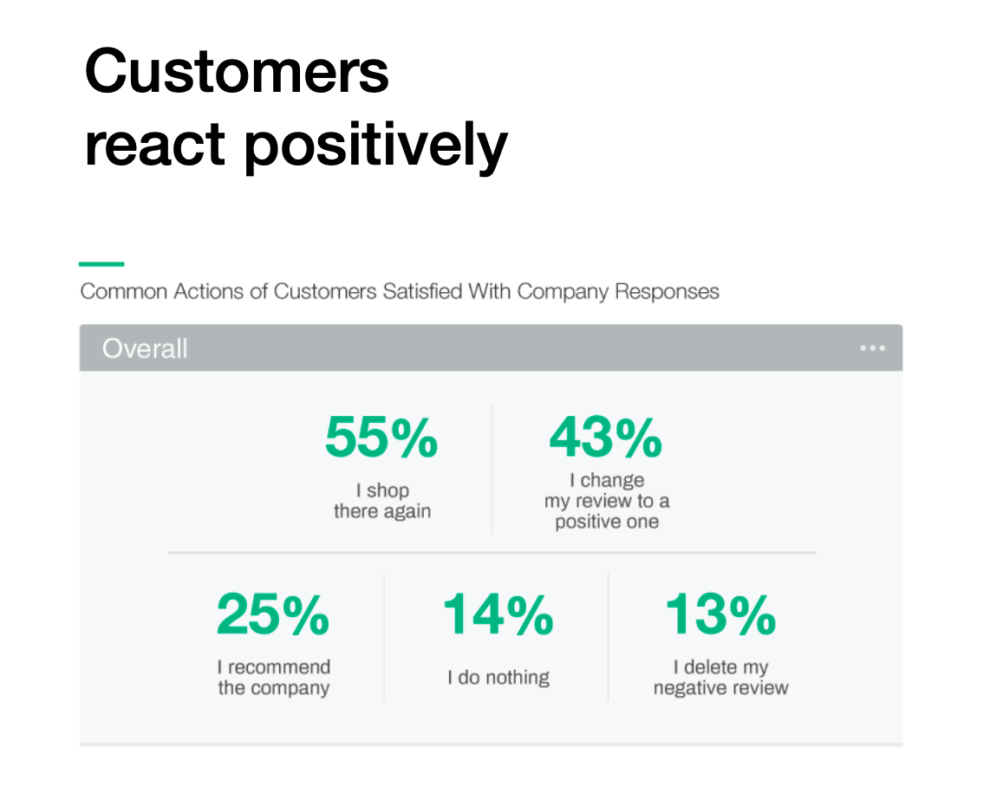
Now that we’ve talked about how customers react to your responses, let’s talk about writing responses to reviews in a guided way.
How to Write Better Review Responses
Saying, “Hey, thanks for your thoughts!” after earning a review isn’t enough. It isn’t compassionate; it isn’t personal; and it doesn’t show that you have a real connection to the situation. This is especially true for negative reviews.
Let’s look at some of the other reasons people leave bad reviews so we can better understand their motives. When we understand their motives, we can write more compassionate responses.
The top reason is a desire to warn others about the experience they had. Following that, the most popular reasons are:
- to see improvements in policy
- acknowledgement of their personal experience
- for the company to be better
- and more
When reading a negative review, pay attention to the underlying cause of the review. Does it fit with any of the above motivations? If so, cater your response to that negative review to directly address that cause. If the buyer sees you took the time to understand them, they are more likely to have a positive impression of you.
Let’s look at some of the other reasons people leave good reviews.
It’s easy to think “Ok, I got a good review – awesome! My job is done.” But a good review is a great opportunity to grow that relationship and earn repeat business. It’s important to reply to great reviews well, which means it’s important to gain an understanding of why people leave good reviews.
When someone takes the time to leave you a good review, not only do they want to help others make good decisions, but they want:
- to get a reward
- to thank the company or employee
- to give back to the online community
- to correct someone else’s review
- and more.
When replying to your reviews, avoid a cut-and-paste “thank you!” response. A hard won review deserves more attention than that. Look at the underlying cause of the review. Does it fit with any of the above motivations? If so, cater your response to thank them for the real reason they left that review.
Why you should care about why people leave reviews
Compassion and personalization is important in marketing. And reviews – asking for them and replying to them – are part of your marketing strategy. Take the time to understand why people write reviews and what they hope to accomplish. Doing so makes you better at
- asking for reviews
- responding to reviews
- making good reviews work in your favor
- making bad reviews not so bad.
I challenge you to take a look at your review process as it is now. How do you ask for reviews? Does it target the popular reasons people leave reviews?
Also take a look at your method for responding to reviews, both good and bad. Is it as optimized as it can be, based on this research?
Are you using Trustpilot?
Finally, big ups to Trustpilot for the amazing data! We are huge data nerds over at WP Business Reviews so it was a fantastic resource for us. Click here to download the report yourself.
Did you know that you can use WP Business Reviews to display your Trustpilot reviews on your website? Display these alongside your Google Reviews, Facebook Recommendations, and more.

